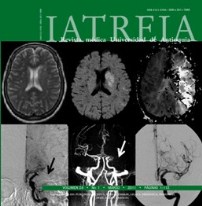Leprosy: an ancient and present-day disease
DOI:
https://doi.org/10.17533/udea.iatreia.8431Keywords:
Leprosy, Leprosy/history, Multibacillary, Paucibacillary, Mycobacterium lepraeAbstract
Ignorance about leprosy is common both in the general population and among physicians and health personnel. It is believed that this disease no longer exists. Perhaps its image as a biblic and ancient scourge reinforces the idea of its elimination. However, leprosy continues to be a public health problem in several countries; among the most affected are India and Brazil. After multidrug therapy (MDT) started during the ninth decade of the XX century prevalence of leprosy dramatically decreased. Incidence, however, did not follow the same trend, probably because of the low impact of MDT on transmission, and the existence of an as yet unidentified reservoir. Familial contacts of leprosy patients are at high risk of suffering the disease at any moment in their lives. So far it has not been possible to determine which ones of the infected contacts will develop the disease. Between 400 and 550 cases of leprosy are reported every year in Colombia. This fact suggests that transmission of Mycobacterium leprae still occurs despite the country being classified as in the postelimination phase. This article presents a historical review on leprosy from the earliest available reports to the more recent advances in the molecular understanding of the disease and its agent. It includes how the comprehension about it has evolved, its clinical characterization, public health control measures, therapy and epidemiology.
Downloads
Downloads
Published
How to Cite
Issue
Section
License
Papers published in the journal are available for use under the Creative Commons license, specifically Attribution-NonCommercial-ShareAlike 4.0 International.
The papers must be unpublished and sent exclusively to the Journal Iatreia; the author uploading the contribution is required to submit two fully completed formats: article submission and authorship responsibility.














